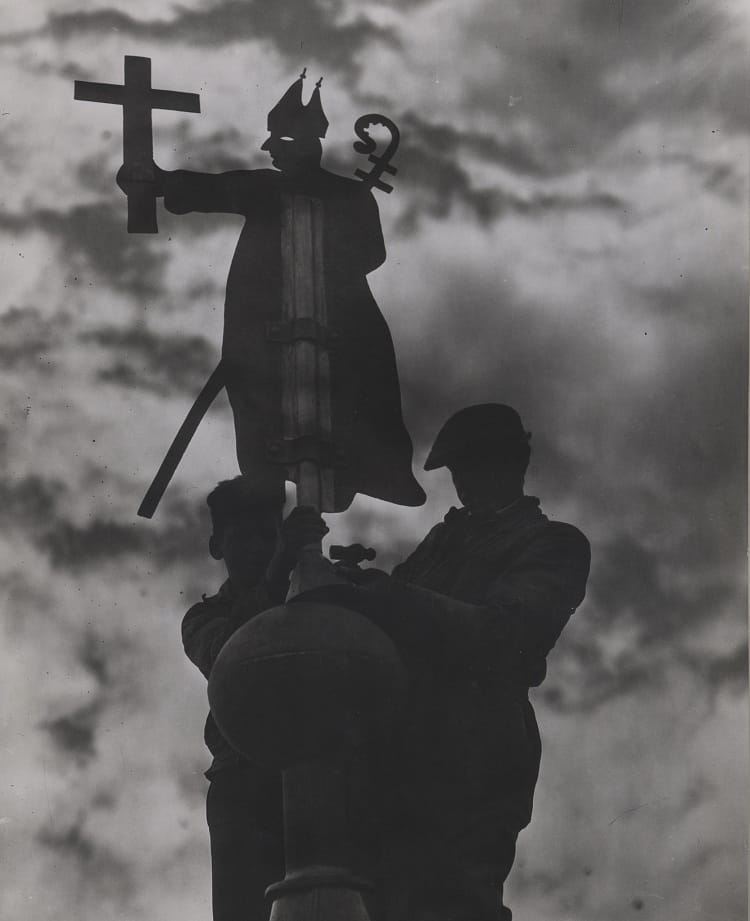Time to crack down on illegal parking in disabled spots, councillors say
Increase fines for the offence, and boost parking enforcement so people begin to fear getting caught, they say.
An old windmill has dominated the landscape in the Liberties for decades. But what happened to its sails?

More than 150 years ago, the sails of a giant windmill that powered the local whiskey industry dominated the scenery on Thomas Street in the Liberties.
The brick body of the windmill – colloquially known as St Patrick’s Tower – still stands, set back from the main road with cars parked around its foot. But its sails have long-vanished.
“I’d be very interested in seeing the St Patrick’s Windmill on Thomas Street with vanes. I’ve never found a pic,” Shane Waring, co-founder of Dublin City Council Beta, said on Twitter, a while back.
[Editor’s note: Waring shared an image of the windmill with its sails on 1 February 2018, which you can see in this image at the National Library of Ireland. Zoom in to get a better look.]
Years before the Guinness company bought the site in 1949, St Patrick’s Tower formed part of George Roe & Co.’s whiskey distillery.

Guinness archivist Fergus Brady says that, by 1887, Roe’s distillery was one of the largest distilleries in Ireland, with an annual output of 2 million gallons of whiskey.
“Although Roe’s whiskey had a good presence in the home market, it enjoyed a life of its own beyond Irish shores,” said Brady, by email.
Most of Roe’s efforts were focused on exports, with large batches shipped to Canada, the USA, Australia and England, he said.
There’s no doubt that the windmill was the most prominent feature of the distillery, and, according to the Guinness archives at least, was built in 1757, the same year Peter Roe bought the site and the business began, said Brady.
Because of the sign reading “1805” above the windmill’s main entrance, there’s some confusion over the exact date it was built.
But according to architectural historian Christine Casey’s book Dublin, the windmill was actually rebuilt in 1805.
And, according to Douglas Bennett’s Encyclopedia of Dublin, it had ceased to turn by 1860.
Technology and modernisation quite likely sealed the windmill’s fate, says Dublin City Council’s Heritage Officer Charles Duggan.
Though that’s guesswork, said Duggan, it ties in with what Guinness archivist Brady recently discovered: an old archival fact sheet stating that the windmill’s sails were removed in the mid-19th-century when wind was replaced by steam in powering the mill.
It is believed to be the oldest smock windmill, or what remains of one, in Europe, says Brady. But smock mills are generally sloped in shape and built with wood.
St Patrick’s Tower, in contrast, is more cylindrical in shape and is built of brick. Perhaps the original 1757 windmill was a proper smock mill and, when it was rebuilt in 1805, George Roe & Co. redesigned it a bit.

In any case, as industry ramped up into the late 19th century, the windmill as a means of power generation gradually became redundant.
St Patrick’s Tower remains the last prominent structure of the old Roe’s distillery.
Seventy-feet wide at its base, it rises to a height of 150 feet. It is capped with a vast copper-clad cupola, which in turn supports a four-foot figure of St Patrick bearing a mitre and a crozier.
A pear tree was planted at the base of the old windmill in 1850, according to Guinness archivist Brady, and still bears fruit today.
“[The tower] remains an iconic reminder of the industrial heritage of the area, particularly its extensive associations with the distilling and brewing industries,” he says.
It is strange, considering its size and prominence in the city’s landscape that archivists can’t find any photographs or paintings of the windmill as it was.
That might be because of the nature of early photography, says Justin Carville, photographic historian at the Dún Laoghaire Institute of Art, Design and Technology (IADT).
Photography only really became an artistic pursuit in the early 1840s, so there was only a short period in which to capture Roe’s windmill before it was dismantled in 1860, he says.
In Florence in Italy, and in Paris in France, there were early attempts to capture changing streetscapes with the advent of photography, says Carville. But there wasn’t the same movement in Dublin.
“There’s no evidence of that really in Ireland,” he says. “There wasn’t as much commercial photography. For tourists there was a little bit but the earliest photographic book of Dublin is from 1865.”
Although industrial photography later gained popularity it’s perhaps unlikely early photographers felt the need to capture one of Dublin’s numerous industrial structures of the mid 19th century.
That might explain why neither the National Photographic Archive, the Irish Architectural Archive nor the Guinness Archive hold any photos of Roe’s windmill with its sails. It is possible there was a photograph at one point. “But it might not have survived,” says Carville.

An article for The Harp – appearing in March 1958 – states that the windmill appears in early etchings of Dublin. But these drawings are hard to come by. The earliest known drawing (at right) dates from 1888, according to Guinness archivist Brady.
Carol Quinn, archivist with the company Irish Distillers, agrees with Carville.
“The tower was still a landmark. They might have used it for storage but it might have stopped being a windmill before photography,” says Quinn. “[Back then] you generally only had people taking photographs of people who paid them to do it.”
Still, the structure impressed British distilling historian Alfred Barnard. In his 1887 book The Whisky Distilleries of the United Kingdom, he remarked that the sail-less windmill stands “as a distinguishing feature, relic of the past, a landmark for many miles around”.